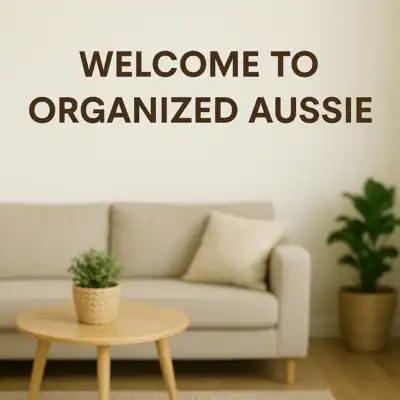Common Decluttering Mistakes in Australia
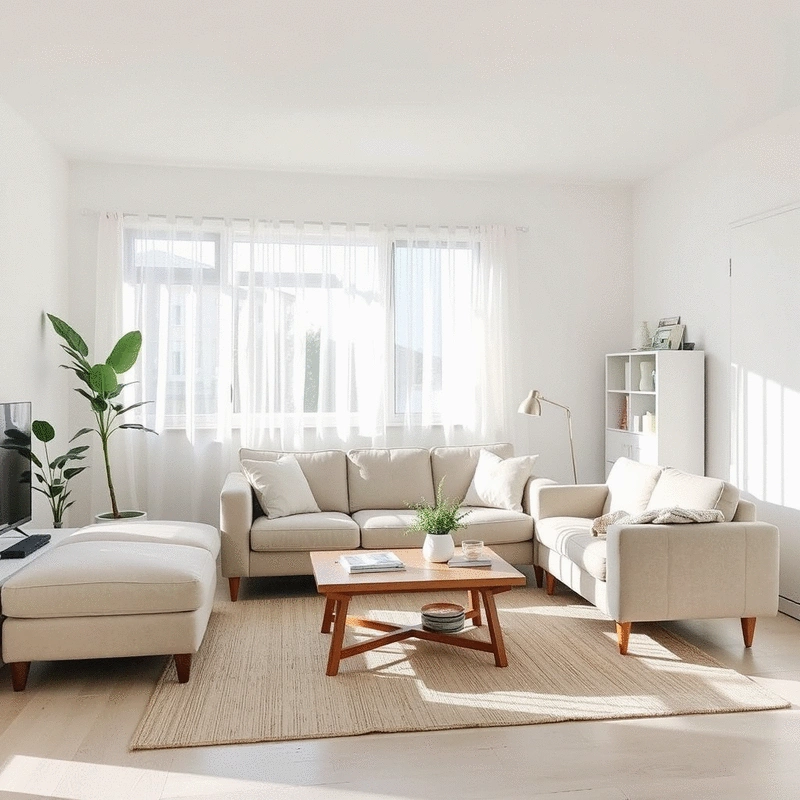
Did you know that a clutter-free home can significantly reduce stress and improve your overall well-being? Decluttering isn't just about tidying up; it's a transformative process that can lead to a more organized and fulfilling life. As you embark on your decluttering journey, consider the common pitfalls that may trip you up. Recognizing these mistakes is the first step toward creating a harmonious living space that truly reflects you!
What You Will Learn
- Understanding the importance of planning before decluttering to enhance productivity and reduce stress.
- Identifying common challenges such as lack of time, emotional attachments, and feeling overwhelmed.
- Recognizing emotional barriers like sentimentality and guilt that hinder the decluttering process.
- Practical strategies to manage decluttering stress, including starting small and involving family members.
- The role of minimalism in fostering a more intentional and fulfilling lifestyle through decluttering.
- Creating a structured decluttering checklist to simplify the process and track progress effectively.
- Incorporating sustainable practices by donating to local charities and engaging with second-hand markets.
- Addressing FAQs to guide your decluttering journey, including tips for beginners and managing emotional attachments.
Key Benefits of Addressing Decluttering Errors
Recognizing decluttering mistakes can enhance your overall experience. Below are key benefits that can motivate you to tackle these common challenges.
Enhanced Productivity
A clutter-free space allows you to focus better on daily tasks.
Reduced Stress
Less clutter can lead to a calmer mind and a more serene atmosphere.
Improved Functionality
An organized home is easier to navigate and use effectively.
Emotional Clarity
Addressing clutter can lead to better mental health and emotional well-being.
Understanding Decluttering Mistakes in Australian Households
Decluttering is a common goal for many Australian families, but have you ever considered the mistakes that might be holding you back? At Organized Aussie, I’ve seen firsthand how essential it is to identify and address these errors. By understanding the decluttering process better, you can create a more peaceful and organized home environment that works for you!
Let’s dive into why addressing decluttering mistakes is so important. When we tackle our clutter, we’re not just clearing out physical space; we’re also making room for mental clarity and emotional well-being. An organized home fosters a sense of control and tranquility, which is vital in our busy lives. Plus, it helps create a living space that truly reflects who we are and how we want to live! If you're looking to declutter your home in Australia, understanding these common pitfalls is crucial for a successful journey.
The Importance of Addressing Decluttering Errors
Recognizing the mistakes we make while decluttering can be a game changer. One common error is failing to plan properly before diving into the task. Without a clear approach, you might feel overwhelmed and give up halfway. Research shows that having a structured plan significantly increases the chances of success.
Here are some crucial reasons to address decluttering errors:
- Enhanced Productivity: A clutter-free space allows you to focus better on daily tasks.
- Reduced Stress: Less clutter can lead to a calmer mind and a more serene atmosphere.
- Improved Functionality: An organized home is easier to navigate and use effectively.
Why Decluttering Matters for Australian Families
In Australian households, decluttering is vital for creating a harmonious living environment. It helps families make the most of their spaces, especially in homes where every square meter counts. By learning to declutter effectively, families can reduce chaos and enhance their overall quality of life.
But why does this matter specifically for us Australians? From busy lifestyles to unique home layouts, we face challenges that require tailored solutions. By focusing on decluttering, we can address these challenges head-on and create spaces that work for our needs!
Common Challenges Faced by Households
Every household experiences its own set of challenges when it comes to decluttering. One major hurdle is often time management; with family commitments, work, and social activities, finding the time to declutter can be difficult. Additionally, emotional attachments to belongings can make it hard to let go, leading to indecision and frustration.
Let’s look at some of the most common challenges:
- Lack of Time: Busy schedules can push decluttering to the bottom of the to-do list.
- Emotional Attachments: Sentimental items often become roadblocks in the decluttering process.
- Overwhelm: The sheer volume of clutter can feel daunting, leading to procrastination.
Emotional Attachments to Possessions
One fascinating aspect of decluttering is the emotional connection we often have with our belongings. It’s common to feel tied to items that hold memories or represent significant moments in our lives. Recognizing these emotional barriers is a crucial step toward a successful decluttering journey.
Many families find this hard to navigate, but it’s important to remember that memories don't reside in objects. By letting go of physical items, you can still cherish the memories they represent. It’s all about finding a balance that works for you!
Recognizing Emotional Barriers to Letting Go
Identifying emotional barriers can help ease the decluttering process. Ask yourself questions like, “Why am I holding onto this?” or “Does this item still serve me?” These reflections can clarify your feelings and guide you in making decisions.
Here are some common emotional barriers:
- Sentimentality: Holding onto items because they remind you of people or experiences.
- Fear of Forgetting: Worrying that letting go means losing cherished memories.
- Guilt: Feeling guilty about discarding gifts or inherited items.
Strategies to Manage Decluttering Stress
It’s no secret that decluttering can be stressful, especially when emotional attachments are involved. At Organized Aussie, I’ve found some practical strategies to help manage this stress. Breaking down the decluttering process into smaller tasks can make it feel less overwhelming.
Here are a few effective strategies:
- Start Small: Begin with a single drawer or a small area instead of tackling the entire house.
- Set a Timer: Give yourself a specific amount of time to declutter, making it feel more manageable.
- Involve Others: Invite family members to join in, turning the task into a fun bonding experience!
Understanding Decluttering Mindset and Its Impact
Our mindset plays a crucial role in how we approach decluttering. Adopting a positive and proactive outlook can make a significant difference in the process. Embracing the idea that decluttering is not just about getting rid of items but also about creating a better living space can motivate and inspire change!
Additionally, understanding the impact of minimalism can reshape your decluttering journey. Minimalism isn’t about living with nothing; it’s about making space for the things that truly matter. A minimalist mindset encourages intentionality and helps you focus on quality over quantity.
How Emotions Influence Decluttering Choices
Emotions play a significant role in our decluttering choices and can sometimes lead us astray. For instance, feeling overwhelmed might cause us to abandon the task entirely, while guilt can prevent us from letting go of items. By acknowledging these emotions, we can make conscious decisions that align with our goals.
Here’s how emotions can influence our choices:
- Overwhelm: A cluttered space can lead to a sense of paralysis.
- Guilt: Letting go of gifted items can trigger feelings of disloyalty.
- Joy: Items that bring happiness can encourage us to hold onto excess.
The Role of Minimalism in Decluttering
Minimalism is an empowering approach to decluttering that focuses on simplifying our lives. It encourages us to keep only what adds value and joy, leading to a more intentional lifestyle. By embracing minimalism, you can create a space that feels open and free! To truly simplify, consider implementing smart storage ideas for apartments, helping you maintain a clutter-free environment.
Consider these minimalism principles as you declutter:
- Quality Over Quantity: Choose fewer, higher-quality items that you love.
- Intentional Living: Make deliberate choices about what to bring into your home.
- Mindful Consumption: Think critically about purchases to prevent future clutter.
Quick Summary
Here's a brief recap of the key points discussed so far:
- Decluttering is essential for creating a peaceful and organized home environment.
- Addressing common decluttering mistakes enhances productivity, reduces stress, and improves functionality.
- Emotional attachments can hinder decluttering efforts, but recognizing these barriers is key to progress.
- Implementing structured strategies, such as checklists and storage solutions, can simplify the decluttering process.
Taking Action Against Decluttering Mistakes
Ready to tackle those decluttering mistakes head-on? I'm excited to share a step-by-step guide that will empower you to take control of your space! By following a structured approach, you’ll find it easier to navigate the decluttering process and create a home that truly reflects your style.
First things first, let’s create a decluttering checklist. This checklist can serve as your roadmap as you embark on this journey. Here are some essential items to include:
- Identify which area of your home to start with.
- Gather boxes for sorting: keep, donate, recycle, and toss.
- Set a timer for decluttering sessions to stay focused.
- Take before-and-after photos to track your progress!
Creating a Decluttering Checklist for Australian Households
For many Australian families, decluttering can feel overwhelming. Having a checklist can simplify the process and reduce stress. By breaking tasks into smaller steps, you can focus on one area at a time, making the entire journey more manageable.
Consider creating a weekly plan that outlines which rooms to declutter. Here’s a simple template to help you get started:
- Week 1: Kitchen - Clear out expired items and organize pantry staples.
- Week 2: Living Room - Sort through books, magazines, and decor.
- Week 3: Bedrooms - Tackle clothing and accessories, donating what you don't wear.
- Week 4: Bathroom - Dispose of old toiletries and organize essentials.
Visual Aids to Enhance the Decluttering Process
Sometimes, a visual aid can make all the difference! You might want to create mood boards or inspiration images to help you visualize your space after decluttering. Consider using:
- Colorful charts to track your progress.
- Before-and-after images to motivate you.
- Inspirational quotes to keep your spirits high!
Incorporating Storage Solutions and Organizing Hacks
Once you’ve sorted through your belongings, it’s time to find smart storage solutions. Think about how you can maximize your available space. Here are some clever organizing hacks to try:
- Use clear bins to store smaller items, making them easy to find.
- Install floating shelves to display decorative pieces while saving floor space.
- Utilize over-the-door organizers for shoes or accessories—great for tight spaces.
By taking these steps, you'll be well on your way to a more organized home, bringing you closer to that peaceful and functional space you desire. Remember, it’s all about making small changes that lead to big transformations! For those looking for comprehensive solutions, exploring effective rubbish removal strategies can also be a valuable part of your decluttering plan.
Encouraging Sustainable Decluttering Practices
As we declutter, it’s essential to consider sustainability. By incorporating charity and local resources into our routines, we can make a positive impact on our community. At Organized Aussie, I believe that giving back not only helps others but also enhances our own sense of fulfillment.
Incorporating Charity and Local Resources
Finding local charities for donations is a great way to ensure your items go to good use. Many organizations gladly accept gently used goods, and it feels good to know you're helping others while decluttering! Here’s how to connect:
- Research local charities that accept the items you want to donate.
- Contact them to understand their specific donation guidelines.
- Consider scheduling regular donation drop-offs to keep the process ongoing.
Finding Local Charities for Donations
There are numerous charities across Australia that would appreciate your donations. You can check out:
- The Salvos (Salvation Army).
- Vinnies (St Vincent de Paul Society).
- Local homeless shelters or community centers.
It's all about discovering what's available in your community and supporting those in need!
Connecting with Second-Hand Markets in Your Area
Another fantastic way to declutter sustainably is by tapping into second-hand markets. These platforms not only allow you to sell your unused items, but they also encourage recycling and reuse, which is vital for our environment.
- Check out Facebook Marketplace and Gumtree for easy selling.
- Explore local garage sales or flea markets in your area.
- Consider apps like Depop or Poshmark for clothing and accessories.
Engaging with these platforms not only helps you declutter but also connects you with others in your community who are looking for gently used items!
Addressing FAQs About Decluttering in Australia
As you work through decluttering, you might have questions. Let’s address some frequently asked questions that can help guide your journey:
Frequently Asked Questions (FAQs)
- What are the first steps for beginners in decluttering?
- If you’re just starting, I recommend beginning with a small space, like a drawer or a section of your closet. Set a timer for 15-20 minutes and focus solely on that area—this helps to avoid feeling overwhelmed!
- How can families manage emotional attachments during decluttering?
- It’s completely normal to have emotional attachments to certain items. Try to keep a few meaningful pieces while letting go of the rest. You can also take photos of items you’re attached to but don’t use.
- How to Approach Digital Decluttering?
- Digital clutter can be just as overwhelming as physical clutter. Start by organizing your files into folders, deleting what you don’t need, and unsubscribing from unnecessary emails. Set aside time each week to manage your digital space—it makes a huge difference!
- Why is planning important before decluttering?
- Planning helps you set clear goals, manage your time effectively, and avoid feeling overwhelmed. A structured approach increases your chances of success and helps maintain motivation throughout the process.
- What are common challenges in decluttering?
- Common challenges include lack of time, emotional attachments to belongings, and feeling overwhelmed by the sheer volume of items. Recognizing these hurdles is the first step to overcoming them.
- How does minimalism relate to decluttering?
- Minimalism is an approach that focuses on keeping only what adds value and joy to your life. It encourages intentionality and helps reduce future clutter by promoting mindful consumption and quality over quantity.
- Where can I donate items after decluttering in Australia?
- You can donate gently used items to charities like The Salvos (Salvation Army), Vinnies (St Vincent de Paul Society), or local homeless shelters and community centers. Always check their specific donation guidelines first.
Summary and Next Steps
We’ve covered a lot about taking action against decluttering mistakes! By following the outlined steps, you can create a more organized and harmonious living environment. Remember, it’s all about progress, not perfection! For more detailed tips on managing your belongings, check out how to declutter your small Aussie apartment effectively.
Recap of Key Insights on Decluttering Mistakes
Always keep in mind that decluttering is a journey. Each step you take is a step towards a more organized life. By avoiding common mistakes and fostering sustainable practices, you'll not only improve your home but also contribute positively to your community.
Encouragement to Start Your Decluttering Journey Today
So, what are you waiting for? Grab that checklist and start your decluttering journey today! Trust me, the sense of accomplishment you’ll feel is worth every moment you invest. Happy organizing, friends! If you’re looking for more guidance, our guide on declutter tips for busy families can provide additional support.
Recap of Key Points
Here is a quick recap of the important points discussed in the article:
- Plan Your Decluttering: Approach decluttering with a structured plan to enhance productivity and reduce overwhelm.
- Start Small: Tackle small areas first to build momentum and make the process feel manageable.
- Recognize Emotional Attachments: Identify emotional barriers that prevent you from letting go of items and understand that memories can exist without physical objects.
- Utilize a Checklist: Create a decluttering checklist and timeline to stay focused and organized throughout the process.
- Incorporate Sustainable Practices: Donate to local charities or sell items to second-hand markets to promote recycling and support your community.
- Embrace Minimalism: Focus on keeping high-quality items that add value to your life, encouraging intentional living.
Popular Posts
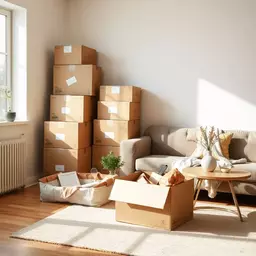 Have you ever stepped into a cluttered room and felt an instant wave of stress? The truth is, our en
Have you ever stepped into a cluttered room and felt an instant wave of stress? The truth is, our en
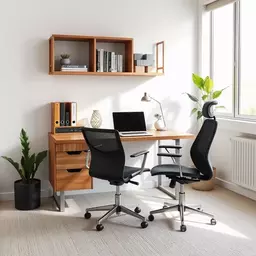 Every day, Australians face the challenge of creating efficient home office spaces in often limited
Every day, Australians face the challenge of creating efficient home office spaces in often limited
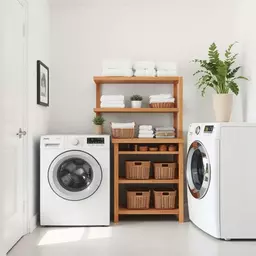 Have you ever felt overwhelmed by the chaos in your laundry space? Organizing your laundry isn't jus
Have you ever felt overwhelmed by the chaos in your laundry space? Organizing your laundry isn't jus

